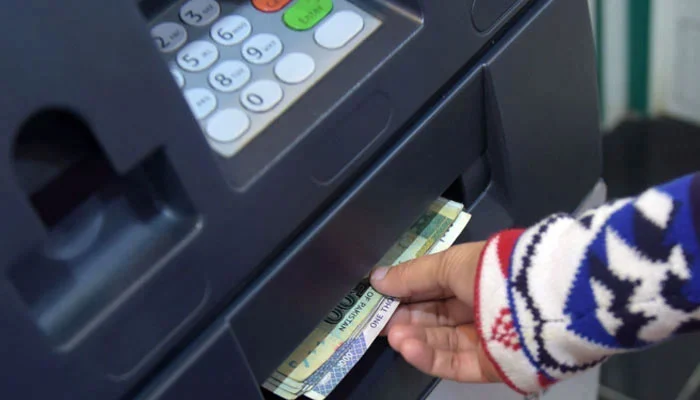The federal government has decided to increase the cash withdrawal threshold for non-filers from Rs50,000 to Rs75,000, aiming to provide relief to middle-income bank users, as reported by The News on Saturday. Under the revised budget proposals for Fiscal Year 2025-26, withdrawals exceeding this new limit will be subject to a higher 0.8% advance tax, an increase from 0.6% in the current year.
This development follows the Federal Board of Revenue (FBR)’s introduction of stringent new measures in the proposed Finance Bill 2025-26. However, the decision, endorsed by FBR Chairman Rashid Langrial and approved by the National Assembly’s Finance Committee on Friday, signifies a notable shift in the government’s approach to revenue collection, striking a balance between facilitation and enforcement. The move also includes a crucial exemption for Asaan Accounts, widely utilized by low-income individuals, ensuring they remain untaxed.
Lawmakers and the FBR chief reached this agreement during the NA standing committee meeting on Finance and Revenue. This decision will now be incorporated into the finance bill 2025-26, scheduled for passage by the end of this month.
In a significant win for the real estate sector, the government has opted to abolish the 3% to 7% federal excise duty on the purchase of commercial and residential properties and open plots—a controversial tax that the IMF had initially opposed. “We convinced the IMF that this excise duty was wrongly imposed, as it applies globally only on movable assets. And the revenue would not fall,” stated Langrial during the meeting chaired by MNA Syed Naveed Qamar.
Under the updated taxation structure, property sellers will now face substantially higher withholding taxes: 4.5% for properties with a gross value up to Rs50 million, 5% for properties valued between Rs50 million and Rs100 million, and 5.5% for properties exceeding Rs100 million. Buyers, conversely, will experience slightly reduced rates: 1.5%, 2%, and 2.5% across the same value bands. For sellers, this translates to an across-the-board increase of 1.5 percentage points in withholding tax rates, according to the FBR chairman.
Meanwhile, the government is extending a lifeline to the struggling equity market by rationalizing dividend tax rates on Mutual Funds. The government is narrowing the tax advantage previously enjoyed by investors in government securities. The tax on investments in government securities (including PIBs and T-bills) has been raised from 15% to 25%, while the tax on equity dividends remains at 15%. “This will redirect capital from government securities to the stock market,” said Minister of State for Finance Bilal Azhar Kayani. “We want investors to shift their focus to equities, where the real economic growth happens.”
High-income earners may experience a slight reprieve. The FBR chief disclosed that the income tax surcharge on individuals earning over Rs10 million per month would be reduced from 10% to 9%, citing concerns over the increasing exodus of high-skilled professionals. “This tax is contributing to brain drain,” Langrial asserted, advocating for a more competitive fiscal regime to retain talent. A 0.5% cut has been proposed to the super tax for incomes between Rs200 million and Rs500 million in FY2025-26. A tiered super tax structure is proposed for higher incomes: 1% on income between Rs150 million and Rs200 million, 1.5% (Rs200m to Rs250m), 2.5% (Rs250m to Rs300m), 3.5% (Rs300m to Rs350m), 5.5% (Rs350m to Rs400m), 7.5% (Rs400m to Rs500m) and 10% for those having income above Rs500 million.
Notably, global tech giants like Google, YouTube, and Facebook are set to see their taxes increase. The government is raising the tax on online advertisements from 10% to 15%, with the FBR chief expressing hope that this will not only boost revenue but also encourage these platforms to establish physical offices in Pakistan. Platforms with a physical presence will still benefit from a reduced 5% withholding tax, but the FBR has now proposed a legal requirement for all digital advertisers to file quarterly statements detailing ad revenues generated in Pakistan.
Thar coal miners will now be permitted to sell coal to sectors beyond independent power producers (IPPs), for which a 100% tax credit was previously granted. Under the revised policy, the tax credit will be proportionally reduced based on the share of coal sold outside the power sector, a move aimed at boosting the utilization of local coal.
In a controversial move, the government also proposed to impose a phased sales tax in the erstwhile FATA and PATA regions, commencing at 10% and escalating to 18% over four years. MNA Shahram Khan Tarakai opposed this plan, citing deteriorating economic conditions in the tribal areas. However, Langrial assured that income tax exemptions would continue, and the new sales tax measure was developed in consultation with industry stakeholders to prevent the abuse of existing exemptions.



